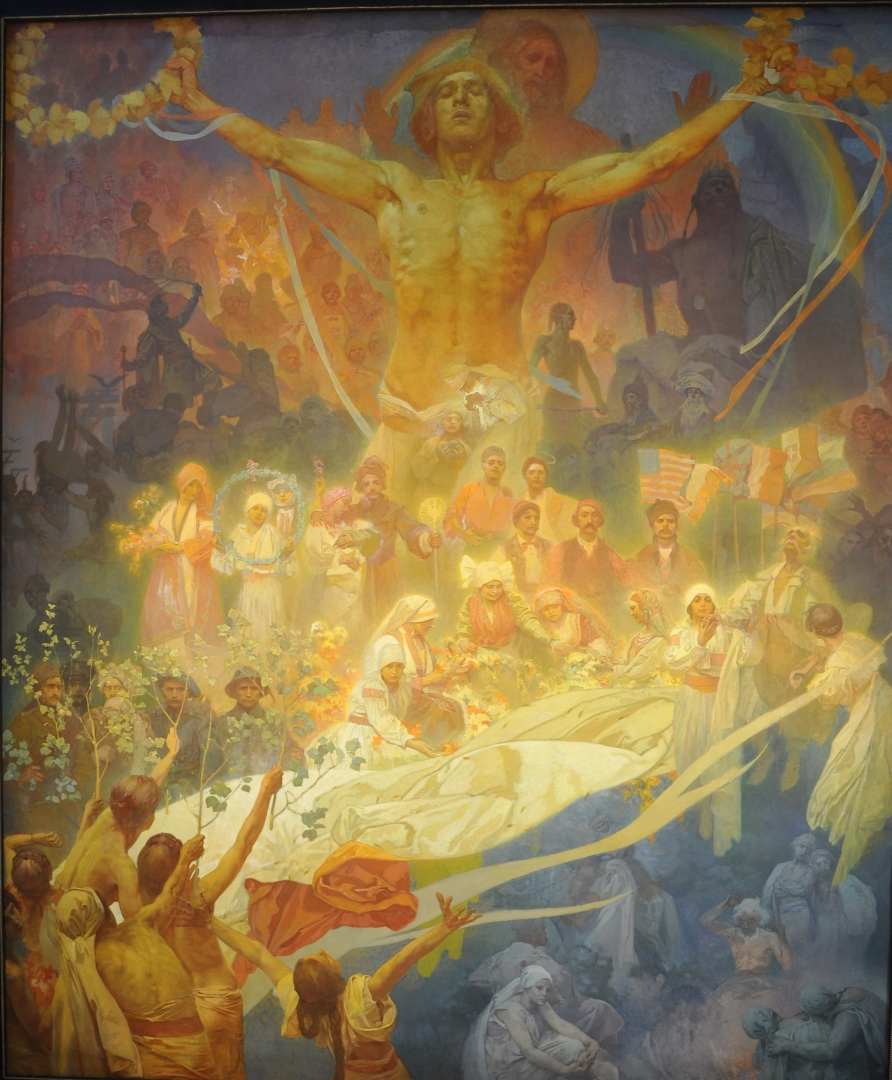APOTHEOSIS OF THE SLAV HISTORY
The final painting summarizes the history of the Slavs and the Slav Epic. It is divided into four colors. In the lower right corner, blue symbolizes ancient times and the period when the Slavs lived in their homeland and worshipped pagan gods. The painting shows a shaman offering a sacrifice to the gods. In the upper part of the painting, red represents significant moments in the history of Slavic nations and the most notable Czech rulers - Premysl Otakar The Second, Charles IV, and George of Poděbrady. It also recalls the reformist ideas of Jan Hus and the successes of the Hussite movement. The middle section of the painting is filled with black, recalling the time when the Slavs faced defeats and oppression. People at that time had to fight against invasions from the Franks, Avars, and Turks. This color is associated with the 300year period during which the Czech language was affected by prohibition and oppression after the defeat at the Battle of White Mountain. The largest area of the painting is filled with yellow, which reminds us of the liberation of the Slavs after the fall of Austria-Hungary and the establishment of the first Czechoslovak Republic in 1918. On the left are legionnaires and people welcoming them. The entire illuminated center of the painting creates an impression of a celebration of freedom. The dominant figure is a Slavic youth holding victory wreaths with the Czechoslovak tricolor. Behind him, Christ blesses all nations. The painting is concluded with a rainbow, symbolizing peace among nations.

